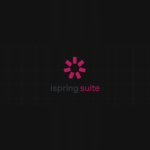Big companies know that the key to their thriving success is a skilled and well-trained team of professionals. But simply throwing courses at employees isn’t enough.
It’s time to forget the days of boring compliance training and start fostering a culture of continuous learning and development with the right essential tools.
The L&D landscape is brimming with interactive, engaging, and budget-friendly options for building educational courses that actually stick. However, finding the best solution may be harder than it seems.
Our detailed guide lets you dive deeper into the best eLearning authoring tools 2024 by showcasing their advantages and strong features. This article will help educators and leaders to understand their company’s unique needs to select the eLearning solution that suits their requirements the best.
An eLearning authoring tool is software for educators to create digital educational content without requiring advanced programming skills. These materials can take various forms, such as modules, courses, quizzes, presentations, or simulations.
The user-friendly nature of these course authoring software options has led many businesses to opt for them. They offer easy navigation, empowering users to leverage the best content authoring tools for improving their team’s skills.
While all the eLearning authoring tools share common features, certain standout features can set one apart from another. These distinctions can be game-changing when selecting the best software for your needs.
What are the common features of Elearning Authoring Tools?
Although all elearning authoring tools share fundamental features for creating digital learning content, they vary in their specific functionalities and capabilities.
Key features typically include content creation and multimedia integration. These functionalities enable users to generate, incorporate and modify diverse content types, including text, images, videos, audios and interactive elements. Interactive elements include quizzes, assessments, simulations, branching scenarios and interactive presentations, often coupled with tools for assessing and monitoring the overall educational progress.
Because elearning authoring tools make life easier by eliminating the need for advanced coding or programming skills, they offer pre-designed templates and themes to streamline course creation and ensure visual consistency. Additionally, they ensure adaptability across different devices and screen sizes.
For publishing, these tools provide various exporting options, such as exporting courses as SCORM or xAPI packages for seamless integration with learning management systems. They also allow publishing to web formats or standalone applications.
What are some unique features of Elearning Authoring Tools?
While some authoring tools may excel in offering advanced interactivity options like complex simulations, gamification elements, VR or AR experiences and adaptive learning pathways, others cater to users with high coding skills by providing scripting or programming capabilities – making life difficult. This enables users to create custom interactions, animations or functionalities.
These advanced features are most beneficial for companies with a skilled workforce and ample budget, along with a clear vision for their courses.
Some authoring tools even integrate AI capabilities for personalized learning experiences, content recommendations, adaptive assessments, and automated feedback generation. Nevertheless, we believe that the common features suffice to ensure quality education.
There’s no one-size-fits-all answer to picking best elearning authoring tools software so it’s important to consider your company’s needs to find the ideal fit.
Needs Analysis for Your Organization
Conducting a needs analysis is essential for selecting one of the best elearning authoring tools. To aid in this process, we’ve compiled a comprehensive list, let’s have a look:
What is your goal?
Determine the objective of implementing elearning within your company. Are you aiming to improve training efficiency, boost employee engagement, or both? Alternatively, perhaps your goal is simply to build capacity within your company.
What resources do you already have?
Assessing your company’s current technological infrastructure, including hardware and software capabilities, is essential. Additionally, evaluate the technical expertise of team members who will utilize the authoring tool – both instructional designers and learners.
Consider factors such as the team’s proficiency in multimedia creation, instructional design and programming skills. After all, these individuals will be responsible for building the courses. This evaluation will help ensure compatibility and efficiency when implementing the chosen elearning authoring tool.
What are the company’s needs?
The key to a company’s success is building a top-notch educational experience through eLearning. Their main focus is understanding exactly what their employees need to get the most out of the training. This includes pinpointing knowledge gaps and desired skills, whether it’s for new hires or keeping everyone on top of their game. They also seem interested in streamlining the process of creating the eLearning content itself, most likely to make it efficient and high-quality. They want to make sure the training is not only accessible but also engaging, keeping learners motivated throughout the process. These insights will help them understand the specific challenges, preferences, and overall needs of their employees.
With these requirements in hand, you can accurately assess the features to look for in the best elearning authoring tools software. Prioritize these based on their significance to your company’s objectives and the practicality of implementation within your constraints.
We guarantee that this approach ensures that the chosen tool aligns perfectly with your organization’s needs and goals.
Anything else to consider?
Yup, that’s why we’ve included this fourth point as well. As the elearning authoring tools software market continues rapid growth with frequent changes and improvements within their features, it’s crucial to continually monitor and evaluate the effectiveness of the chosen tool in meeting your company’s elearning objectives.
While this may seem more like a suggestion than a formal part of the needs analysis, it’s still vital to ensure high-quality education. Be prepared to make adjustments or switch to alternative solutions if necessary.
By following this structured approach, your company can make an informed decision when selecting the best course authoring software that aligns with your requirements and objectives. Now, let’s compare five of the best instructional design authoring tools and see if any of them match your needs.
Best Elearning Authoring Tools Comparison
Adobe Captivate (30-Day Free Trial / $33.99 Per Month)

Advantages
- Captivate offers extensive support for multimedia elements like videos, simulations, and interactive elements.
- It allows for the creation of responsive courses that adapt to various screen sizes and devices.
- Captivate includes features for creating complex simulations, VR experiences and interactive videos.
Disadvantages
- It can be challenging for beginners to learn due to its extensive feature set and complexity.
- Captivate’s licensing costs is higher compared to other authoring tools.
Elai.io (Freemium Available / $23 Per Month)

Advantages
- Elai offers an all-in-one platform for developing interactive elearning video content with over 80 AI avatars available in more than 75 languages with the ability to add “Listening Avatars” to craft engaging dialogues between the presenters;
- Elai.io allows you to export your created video courses in a SCORM format for seamless integration with any Learning Management System (LMS) for easy distribution and learning tracking;
- It offers features for collaborative course development, allowing several users to work on projects simultaneously and leave comments when reviewing the created videos;
- The tool enables users to make videos using a wide variety of tailored video templates or from scratch. Elai.io’s comprehensive editor seamlessly transforms PDFs, PPT\PPTX, plain text or URLs into video;
- The platform allows users to make educational video content with interactive quizzes, customizable buttons, clickable elements, and screen recording option for more captivating learning material generation;
- AI Storyboard feature is the right solution for creating videos from a simple text prompt with the help of AI in a few clicks;
- Custom Avatar creation and Voice cloning in 28+ languages give a more personalized touch to learners’ experience. Create AI Avatar of the teacher, tutor, or mentor to build more trust in your video courses;
- eLearning video generation automation at scale via API;
- The ability to make Custom video templates with your style, colors, music and fonts makes your eLearning materials more professional-looking.
Disadvantages
- Real-time rendering is still in development so the users need to wait a few minutes for video to be rendered.
- Custom AI avatar Creation is available as a separate option that is not included in the subscription plans.
iSpring Suite (14-Day Free Trial / $770 Per Year)

Advantages
- iSpring Suite seamlessly integrates with PowerPoint, allowing users to create interactive elearning content directly within the familiar PowerPoint environment.
- Its user-friendly interface and pre-designed templates assist in quick course development.
- iSpring Suite’s features are a great fit for making quizzes, surveys, and assessments.
Disadvantages
- While iSpring Suite is suitable for creating standard elearning courses, it does lack some of the advanced interactivity options found in other tools.
- Although it offers a wide variety of subscriptions, there are no monthly options available, which can result in higher payments for yearly subscriptions.
Articulate (30-Day Free Trial / $1,099 Per Year)

Advantages
- Articulate offers an easy-to-use platform interface. Its drag-and-drop functionality makes course creation accessible even to beginners.
- It provides a wide range of interactive templates for creating engaging learning experiences.
- Storyline integrates well with other Articulate tools like Rise and 360 for collaborative course development.
Disadvantages
- Similar to iSpring Suite, Articulate only offers yearly subscriptions, resulting in higher initial payments.
- Articulate does not have a built-in content library so the users may need to search assets externally.
Lectora Inspire (30-Day Free Trial / $117 Per Month)

Advantages
- The platform provides the users with lots of interactivity features such as branching scenarios, simulations and gamification elements.
- It offers robust accessibility features, making it suitable for creating courses that cater to different accessibility needs.
- Lectora Inspire supports various publishing formats, including SCORM and xAPI, for seamless integration with learning management systems.
Disadvantages
- The solution does have a steeper learning curve that may seem hard for users new to the elearning development.
- While it provides basic templates and assets, it does not offer as extensive a built-in library as the other tools do.
As we can see, each tool has its strengths and weaknesses, so evaluate them against your requirements, which you have already determined with the help of the needs analysis in this article.
FAQ
What is the best Elearning Authoring Tool?
Since most authoring tools for elearning share many similarities and some differences, it’s hard to pick a one-size-fits-all solution that fulfils all your needs because customers’ requests and preferences might vary from case to case.
The most popular tools include Adobe Captivate, Elai.io, iSpring Suite, Articulate and Lectora Inspire – the ones we compared in this article.
However, selecting the best elearning authoring tool strictly depends on your resources, requirements and budget. We highly encourage you to analyze your needs using the guide provided in this article and to explore the best elearning authoring tools comparison list to make the most informed decision for your business.
How to choose the right Elearning Authoring Tool?
Finding the best eLearning authoring tool for your organization includes of various crucial aspects to cosider and requires a systematic approach. The educators should understand how crucial is to evaluate your needs and preferences beforehand. Firstly define your requirements, assess your resources and technical expertise, and then compare them against some of the best eLearning authoring tools to make the most informed decision.
Furthermore, keep in mind that you can always request a demo of a course authoring software or monitor the progress of your current tool. If necessary, be prepared to switch to a new tool. Adaptability is a potent trait in optimizing your elearning initiatives.
What are the types of Authoring Tools?
eLearning authoring tools are available in both desktop-based and cloud-based formats. Desktop-based tools like Adobe Captivate, Articulate Storyline and Lectora Inspire allow educators to export courses for online publishing. Cloud-based platforms such as Elai.io provide convenient access from any location.
For users with minimal coding skills, there are code-free authoring tools for elearning designed for ease of use. Rise 360 and DominKnow are some of the good examples, offering intuitive interfaces, drag-and-drop functionality and pre-built components.
On the other hand, there are eLearning authoring tools that facilitate full customization through coding and programming. You can utilize tools mentioned in our best elearning authoring tools comparison list in this article or develop your course using HTML5 independently.
However, this approach presents challenges as you’ll need to plan the entire course, including the interface and leverage your full-stack skills. Typically, this task is better suited for departments rather than individual contributors.

